
“The relevant question is not simply what shall we do tomorrow, but rather what shall we do today in order to get ready for tomorrow.”
- Peter Drucker


“The relevant question is not simply what shall we do tomorrow, but rather what shall we do today in order to get ready for tomorrow.”
- Peter Drucker
Town Council
Connie Porter �������������������������� Mayor
Helen McFalls Council Member
Donnie Adams Council Member
Amanda Sweat ������������������������ Council Member
Gina Porter������������������������������� Council Member
Staff
Shannon Perry������������������������� Town Clerk
Danny Bright District 1
Annie Smith District 4
Eleanor Mixon ������������������������� Community Development Planner
Dolton Williams Executive Director, Union County Development Board
Curtiss Ann Hunter Director, Union County Tourism
Kathy Jo Lancaster ����������������� Director, Union County Community Development and Special Projects
Shane Mitchell ������������������������ Code Enforcement Officer, Union County
Wes Foster ������������������������������� Deputy, Union County Sheriff's Department
Bryan Stone �����������������������������President, Lockhart Power Company
Adrena Powell-Baker Sr Manager, Lockhart Power Company
Lynn Mitchell ���������������������������Generation Manager, Lockhart Power Co�
Drew Rogers���������������������������� Pastor, First Baptist Church of Lockhart
Richard Lewis Pastor, Lockhart Methodist Church
Sam Baines Pastor, Freewill Baptist Church
Jeff Ashe ���������������������������������� Owner, Ashe Realty
Patrick Kay ������������������������������� Town Administrator, Town of Pacolet
Betsy Skipper Union County Arts Council
Graham Williams��������������������� Editor, Union County News
Lee Brannon ���������������������������� Chief, Lockhart Fire Department
Lockhart Tomorrow serves as the chief planning document pertaining to Community and Economic Development for the Town of Lockhart and its community stakeholders. This chapter summarizes the foundation and intent for this important work, providing insight on the plan purpose, goals, process, and overall plan organization.
The Town of Lockhart is embarking on a planning process intended to spur economic growth and community development and cast a vision for the Town's revitalization based on strategic decision-making and investments that will make significant improvements in the community.
The purpose of this plan is to cast a clear and articulate vision for how the Town of Lockhart can capitalize on available resources and assets to enhance the community’s built environment, grow the local economy, and promote nature-based tourism.
The Lockhart Tomorrow Community Development Plan is the result of an inclusive planning effort led by the Town of Lockhart and its many partners. As expressed by stakeholders throughout the planning process, this planning effort is critical for uniting the Town of Lockhart and community stakeholders around a common purpose and strategy for attaining the Town's community and economic development goals. This cooperative planning effort ensures that the community is in an optimal position to pursue the federal, state, and private funds crucial for helping achieve the Town’s revitalization goals.
With effective leadership and the effective execution of this plan’s vision and recommendations, Lockhart Tomorrow will set the stage for a bright future for this historic and proud community.
Lockhart Tomorrow identifies strategies for economic and community development intended to attract new visitors, residents, and businesses. Lockhart
Tomorrow highlights the Town’s unique cultural, historic, and natural resources and offers clearly defined recommendations on how to make the most of these assets to enhance the overall quality of life and help promote tourism.
This plan and its goals stem from local leadership that understands the value of strategic planning and a unified vision. The Town must expand its tourism assets, particularly those related to outdoor recreation, to sustain and grow the community and promote tourism as a viable industry. The Lockhart Tomorrow plan establishes six (6) primary project goals.
Identify the Town’s existing assets and evaluate their current condition and ability to support community and economic development.

Engage local stakeholders and community leaders to establish a vision for enhancing the economic conditions and quality of life in the Town.

Identify new and innovative projects to fill existing gaps and help support and realize the Town’s vision for the future.



Endorse a unified, agreed upon collection of projects which inspires civic pride, encourages entrepreneurship and investment in small businesses, and promotes tourism.

Create a plan that generates interest and inspires the community by creating compelling renderings, conceptual plans, and other illustrations that help effectively communicate plan recommendations.
Provide the Town of Lockhart and its partners with implementation strategies and recommendations that are reasonable, attainable, and sustainable.
The Lockhart Tomorrow Community Development Plan is the product of several months of planning consisting of data gathering, information analysis, field work, site design, and multiple stakeholder meetings. This planning process involved five (5) major phases.
The consultant team conducted site visits and an extensive field analysis to understand key opportunities and constraints, develop an inventory of existing assets, and review previous planning efforts that might have implications on the Lockhart Tomorrow plan.

Nov. 2022
Dec. 2022 - may 2023
The consultant team hosted a directionsetting meeting with the Project Steering Committee to discuss the purpose of the project and establish project goals.

Community partners and stakeholder groups were engaged through interviews and focus group meetings. Community members provided additional input through a Public Forum style meeting.
The consultant team compiled the final plan document to incorporate community input and provide final recommendations and implementation strategies.
Jan. 2023 - May 2023
March - May 2023
The consultant team created a plan framework that featured preliminary recommendations for improving and expanding the Town’s built environment and the potential growth of nature-based tourism.
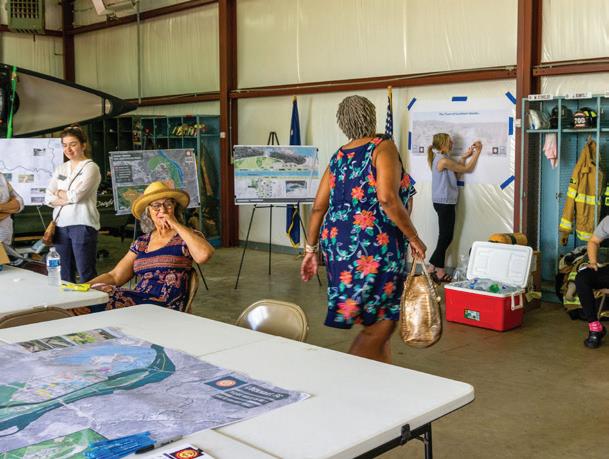

June 2023

Lockhart Tomorrow is organized into five (5) chapters:
1) Background & Purpose
2) Discovery & Analysis
3) Public Engagement & Emerging Themes
4) Plan Recommendations
5) Implementation
The current chapter, which outlines the plan’s purpose, goals, process, and organization.
A snapshot of the Town’s geographic setting, demographic trends, and previous planning efforts is presented here. The chapter also includes an inventory and analysis of the Town’s existing assets.


The tools used for public engagement during the planning process are described in this chapter. The chapter identifies emerging themes that “set the stage” for subsequent recommendations.
This chapter is organized according to the three (3) major Focus Areas identified during the planning process: 1) Town Square, 2) On the River, and 3) Village Grid. Each of these Focus Areas contains specific recommendations for redevelopment and enhancement projects, which are supported by custom illustrations and design concepts.
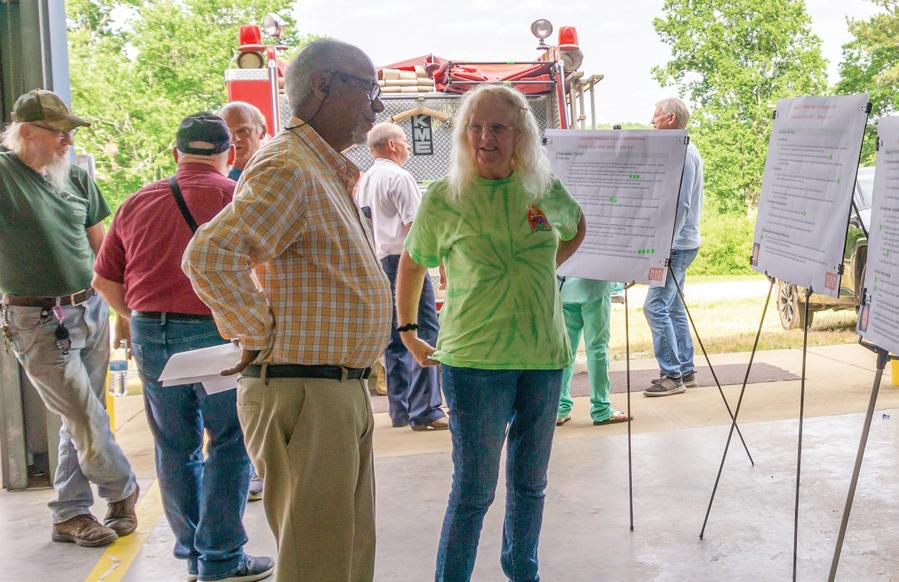


This chapter provides a comprehensive matrix of all recommendations, priorities and implementation strategies; an estimate of costs for key projects; and an outline of grant funding sources.
This chapter examines the regional context, demographics, and relevant past planning efforts that have occurred in the community. It also provides an asset inventory based on existing resources, with an emphasis on nature-based tourism.
This section examines the Community in relation to its local geography, primary transportation corridors, and natural resources.

The Town of Lockhart is located in the Upstate region of South Carolina along the Broad River at the boundary between Union and Chester Counties. The Town features sloping topography ranging approximately 290 feet from its lowest point along the river just south of the Power Station (325 feet) to the highest point along Summit Drive (615 feet).
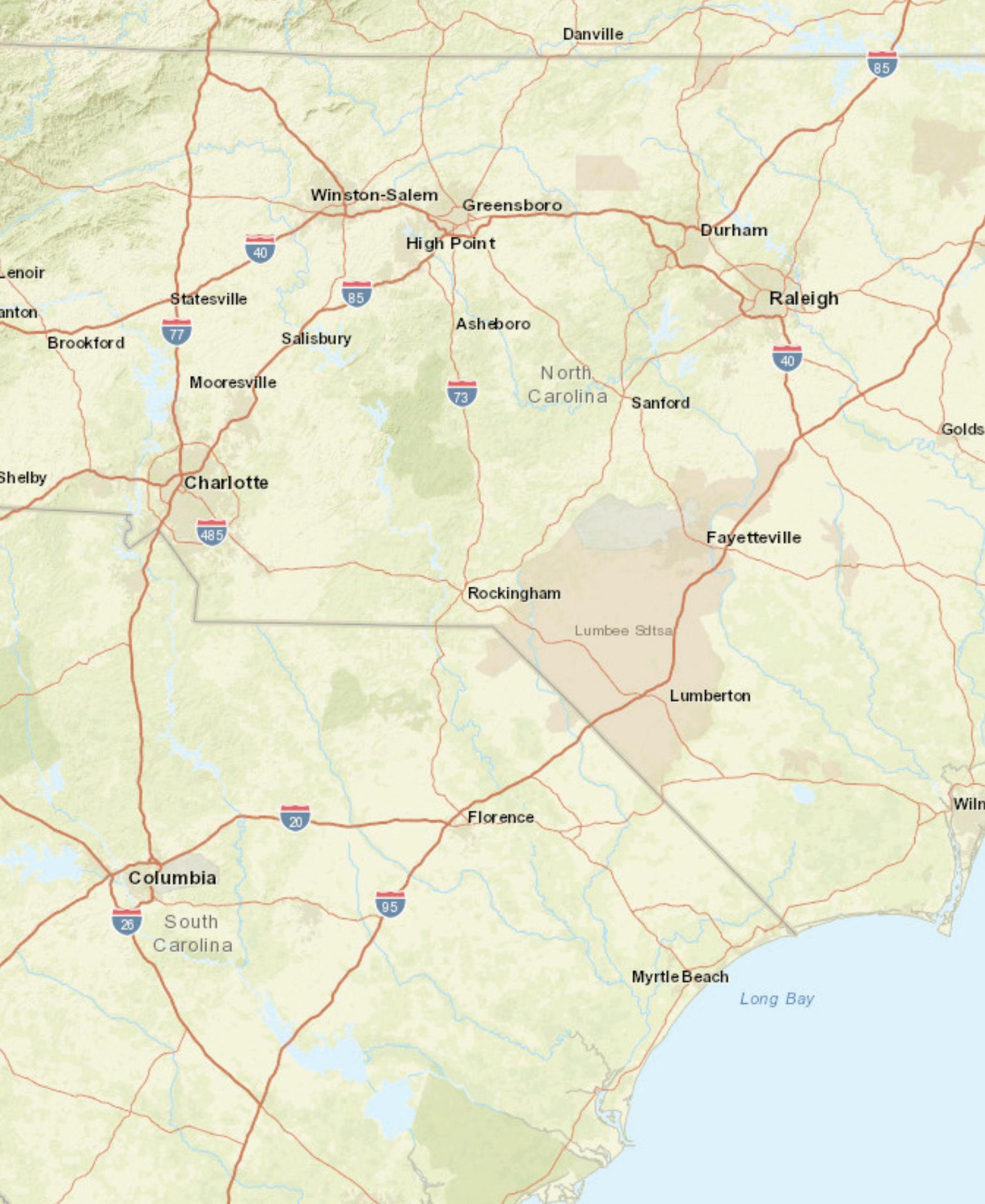
With its source in the Blue Ridge Mountains of North Carolina, the Broad River is a principal tributary of the Congaree River and part of the larger Santee River watershed which flows into the Atlantic Ocean just north of Charleston. The Broad River is a major contributor to this drainage system, which is the second largest network on the eastern coast of the United States in terms of basin area and flow.


Lockhart is located in the far eastern part of Union County in the state’s historic Olde English District at the intersection of the SC Highway 9 and 49 Corridors. These are primary transportation routes, and with a length of 260 miles, Highway 9 is the longest state highway in South Carolina. Major metropolitan areas, including Spartanburg, Greenville, Rock Hill, and Columbia, SC, are all within an easy drive and Charlotte-Douglas International, the nation’s sixth busiest airport, is only an hour away.
Approximate drive times from Lockhart to nearby metropolitan areas: red = 30 minutes, green = 60 minutes, and blue = 90 minutes.
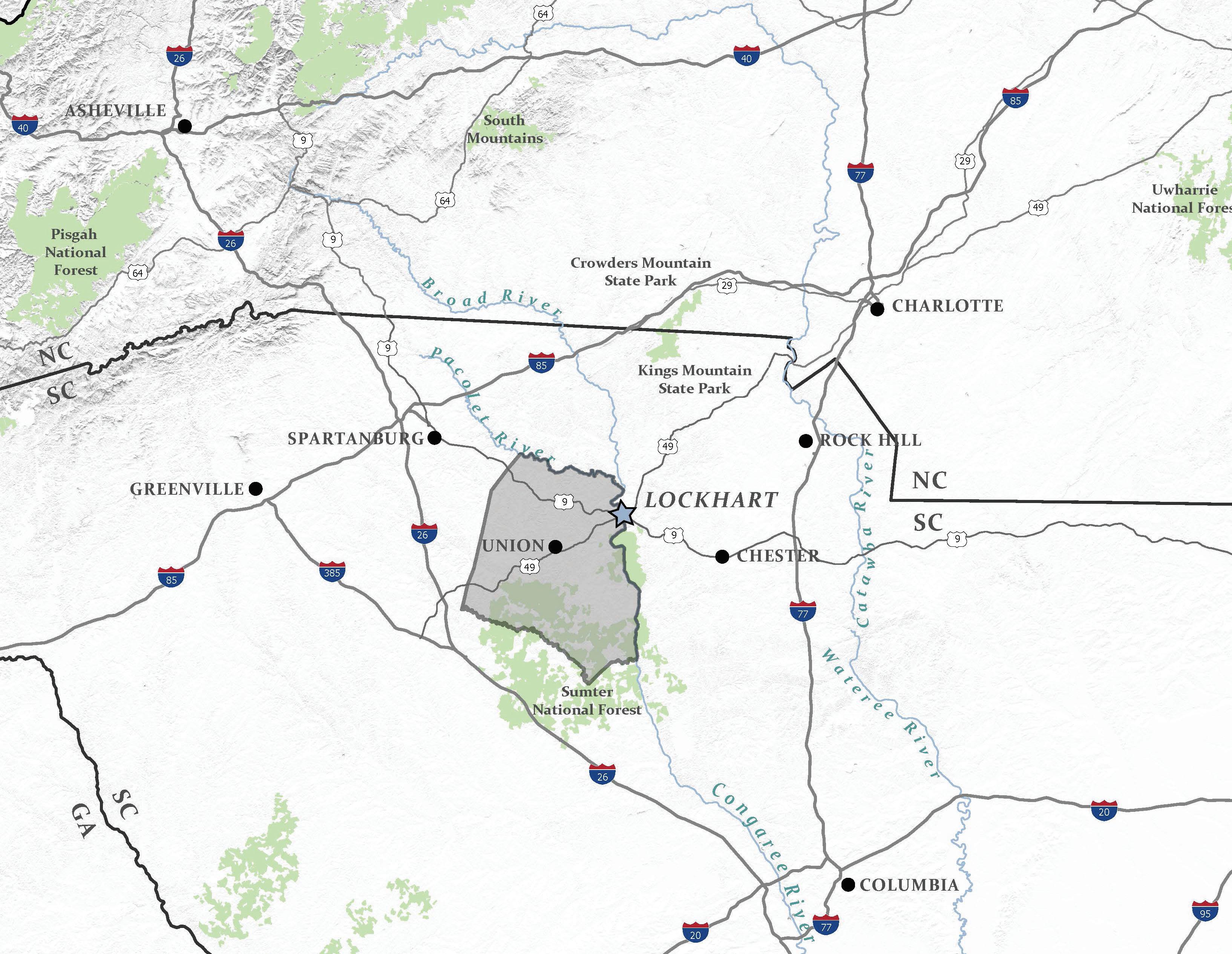
The Greater Lockhart map depicts the Town's official corporate boundaries and land ownership patterns within the project study area. It is recommended that the "in-holdings" be incorporated into the town limits and that infill development and redevelopment become a priority for the Town moving forward.


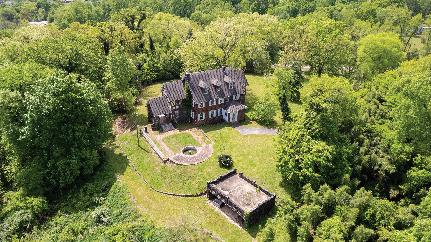


This section explores population, income, and employment data for the Town of Lockhart residents as reported by the U.S. Census Bureau and ESRI Business Analyst (2023).
Lockhart has an area of 0.3 square miles and in 2023 was home to an estimated 378 residents. This represents a relatively high population density of approximately 1300 people per square mile, which is similar to that of Charleston, the state’s most populous municipality. The irregular shape of the municipal boundary must be considered when discussing population density and any “accurate estimate” of the community’s population. Because there are several enclaves, or areas within the community that have never been annexed, residents in these areas aren’t part of the Town’s official population count.
Sixty percent of the Town’s population is between the ages of 18-64, or is considered working age, while the median age is 48. The per capita income is $23,563 annually, while the median household income is reportedly $37,731. Lockhart residents earn considerably less compared with both the South Carolina average ($32,823) and median ($58,234) household incomes. Town of Lockhart residents earn less compared with both the national per capita income ($35,384) and national median household income ($64,994). In Lockhart, the median disposable income (income after taxes) is $31,826. The median
net worth (the difference between total assets and liabilities) is $56,870 as compared with the corresponding state and national medians of $81,150 and $121,760.
The majority of workers in Lockhart are employed in blue collar occupations, and in Spring 2023, the reported unemployment rate was five percent. This is higher than the rate for the state and Union County, which ranged between three and four percent during that time. However, due to the Town’s small population, this represents only a dozen, or so, of the local workforce unemployed at the time.
This section provides a summary of previous plans produced for the area that are relevant to the Town’s current planning efforts. These plans, in part, address community and economic development needs, the potential for nature-based tourism, historical resources, and other various needs within the area. The plans are organized according to their date of completion, ranging from 2005 to 2021.
The Palmetto Conservation Foundation prepared this extensive survey of Union County in 2005 to identify properties with special architectural and historical significance. The survey is important for historic preservation purposes but is also an effective and useful tool for advancing the area’s heritage tourism development efforts. A historical overview of Union County and Lockhart is provided, offering a glimpse at the earliest history of European settlement in the upstate region, beginning in the mid-1700s by Scots-Irish pioneers. The long military history of the region, the agricultural economy and associated textile industry, and the growth of transportation networks are also discussed. Of note are the public works projects including the early lock and canal systems particularly instrumental in Lockhart’s earliest history, as well as the development of the railroad and highway system that enabled commerce to thrive in the area for many decades. Descriptions of specific sites in Lockhart include the Fant Mansion and Presbyterian Church, each of which are eligible for local and federal designation based on their contributions to history and architecture. Recommendations include historic preservation, land use planning, and public awareness initiatives.


The Community Vision Plan Charrette report is the result of a planning and design process completed in 2013 which considers the Town’s history, location, and civic pride as possible economic development tools. The charrette report addressed four key areas: market analysis; design, planning and preservation; branding and marketing; and implementation strategies. The report determined that existing market demand would be unlikely to warrant significant retail investment; however, the Town was well positioned to capitalize on its unique assets, especially regarding the potential growth of nature-based tourism. It describes how Lockhart’s relationship to the Broad River and canal system contributes to a strong sense of place and community. These conditions provide the basis for the report’s implementation strategies and recommendations. Recommendations for historic preservation include specific architectural design guidelines intended to provide guidance for the maintenance, preservation, and enhancement of existing assets. This report places a strong emphasis on marketing and branding, including detailed information about website development and potential marketing materials. The report culminates with an extensive list of recommendations based largely on categories established by the Main Street America Four Point Approach to downtown redevelopment, including ambitious Branding, Design, Economic Development, and Organizational strategies.

The Appalachian Regional Commission (ARC) is an economic development partnership of the federal government, 13 states, and 423 counties within Appalachia. Union County was added to the partnership in 2021 and is one of seven counties in the Upstate of South Carolina eligible for funding through ARC. The South Carolina Appalachian Development Plan for FY 2020-2023 was prepared by the State of South Carolina and provides strategies for economic growth in the Appalachian region in accordance with the overall mission of ARC to invest in projects that promote fundamental economic development principles. These strategies are intended to provide more economic opportunities including a ready workforce, critical infrastructure, natural and cultural assets, and leadership and community capacity. The plan prioritizes various state-specific goals, objectives, and strategies; details project eligibility, evaluation criteria, and output measures; and discusses the role of state and regional agencies, along with both public and private partnerships.
The Catawba Regional Comprehensive Economic Development Strategy (CEDS) is the result of a formal planning process required by the U.S. Economic Development Administration to enable access to federal economic development and grant assistance programs. The Catawba Regional CEDS was prepared by the Catawba Regional COG in 2021 for its local government partners. In conjunction with other major economic development stakeholders, including the South Carolina Department of Commerce, Union County Economic Development Board, and public utility providers such as Lockhart Power, this plan can be used as a blueprint for the coordination of economic development efforts. The CEDS includes an analysis of variables, such as population growth, employment sectors, commuter patterns, and industrial clusters, that contribute greatly to regional economic trends. A SWOT Analysis is provided which highlights the region’s strengths and opportunities (location, partnerships, existing infrastructure, etc.) and the need to leverage these to help address the area’s perceived weaknesses and threats (workforce development, affordable housing, availability of industrial sites, and funding). The action plan included in this CEDS emphasizes the region’s transition from textiles to a more automated manufacturing base that will be dependent on a highly trained workforce. Environmental protection and the promotion of cultural resources are examples offered as areas that can contribute to future growth potential and help address the economic development needs of stakeholders, especially those in more rural areas.

The Union County Comprehensive Plan was adopted in 2021 with the purpose of establishing official land use policies that will help guide growth and new development and protect the cultural and natural heritage of the County. The plan’s primary goals and objectives are related to neighborhood protection, housing, historic preservation, transportation networks, utility infrastructure, active living, and natural resource conservation. The plan addresses many recommendations from the Lockhart Community Vision Plan and recognizes the importance of capitalizing on the Town’s unique setting along the Broad River. Lockhart’s potential for outdoor recreation and nature-based tourism are highlighted as future growth areas for economic development within the county.


This section provides an overview of the physical assets found within the Town of Lockhart and the immediate vicinity and classifies them into three (3) major asset types: 1) Outdoor Recreation and Managed Areas; 2) Natural Resources; and 3) Historic and Cultural Resources. Asset types are described and a summary list of specific assets is provided for each asset type. Exhibits highlight key assets within the community.
The region contains a significant number of conserved lands and managed areas, which provide outdoor recreation facilities and opportunities for residents and visitors. Parks, public lands, multiple-use trails, and paddle accesses offer a variety of recreational activities for people of all ages and abilities.
The Town of Lockhart is fortunate to have abundant natural resources which provide vast potential for the enhancement and development of outdoor recreation opportunities. The area’s proximity to the Broad River with its extensive watershed, forests, and tributary streams provides the Town with extensive natural areas that are attractive to outdoor enthusiasts.
Lockhart is steeped in Southern Appalachian culture and has a deeply rooted history that includes a strong Native American heritage. The past is remembered at a number of area museums and historical sites while the essence of local culture is proudly displayed, most frequently in the form of food, music, arts and crafts, and many other rural Southern Appalachian pastimes and traditions.
Flat Stack Park and Trail
Pacolet and Broad River Blueways
Woods Ferry Recreation Area
Thurmond Wildlife Management Area
Lake John D. Long
Sumter National Forest
Broad River
Pacolet River
Spider Lilies
Presbyterian Church
Methodist Church
Baptist Church
Power Station
Lockhart Canal and Dams
Pedestrian Bridge
McCollum Mound and Fish Weir
Union County Arts Council
Union County Museum



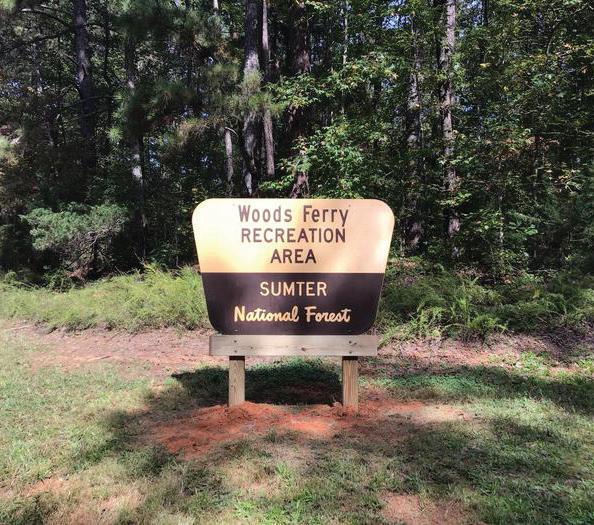

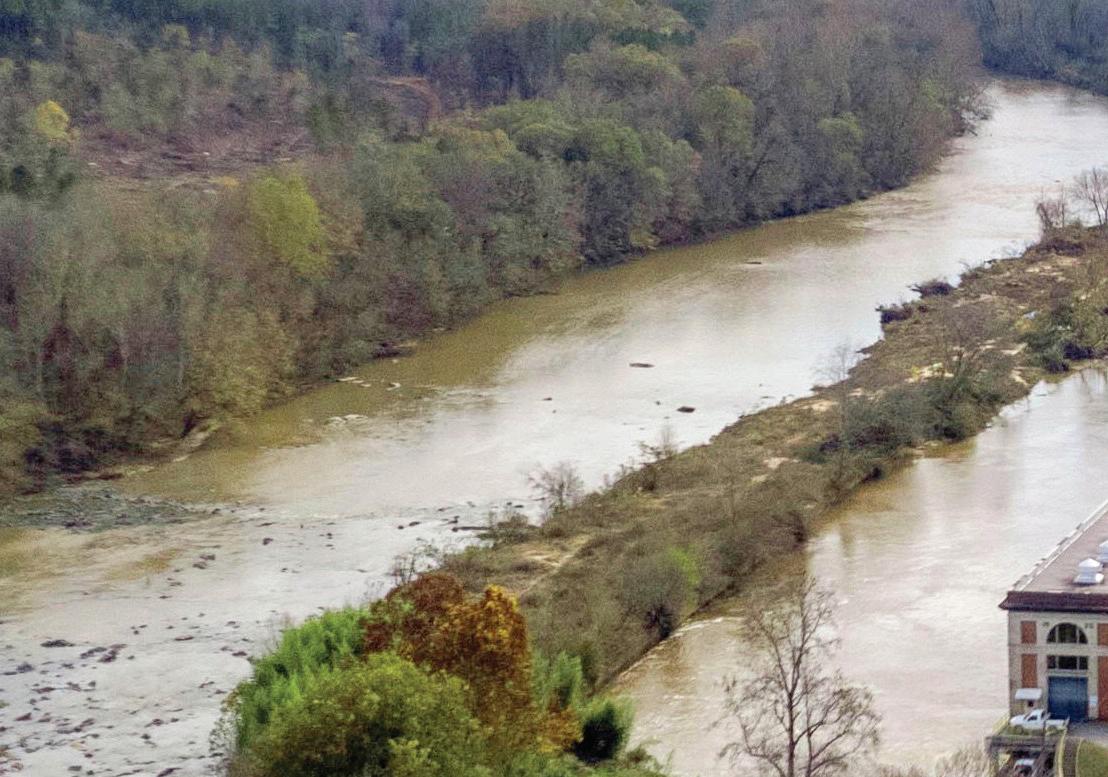



Conserved lands offer managed areas that provide parks, trails, greenways, and river accesses. These outdoor recreation facilities provide direct access to the natural resource assets found throughout the area.

Caption These are not very prevalent
The Skull Shoals Road River Access of the Pacolet and Lawson's Fork Blueway is located 18 miles downstream from the Town of Pacolet and 12 miles upstream from Lockhart on the Union/Cherokee County line.

Caption These are not very prevalent
The South Carolina Division of Wildlife Resources is constructing a new public boat access on the Broad River just north of the Lockhart Canal. This facility will have a new 14-foot wide ramp, 6 trailer, and 5 vehicle parking spaces.
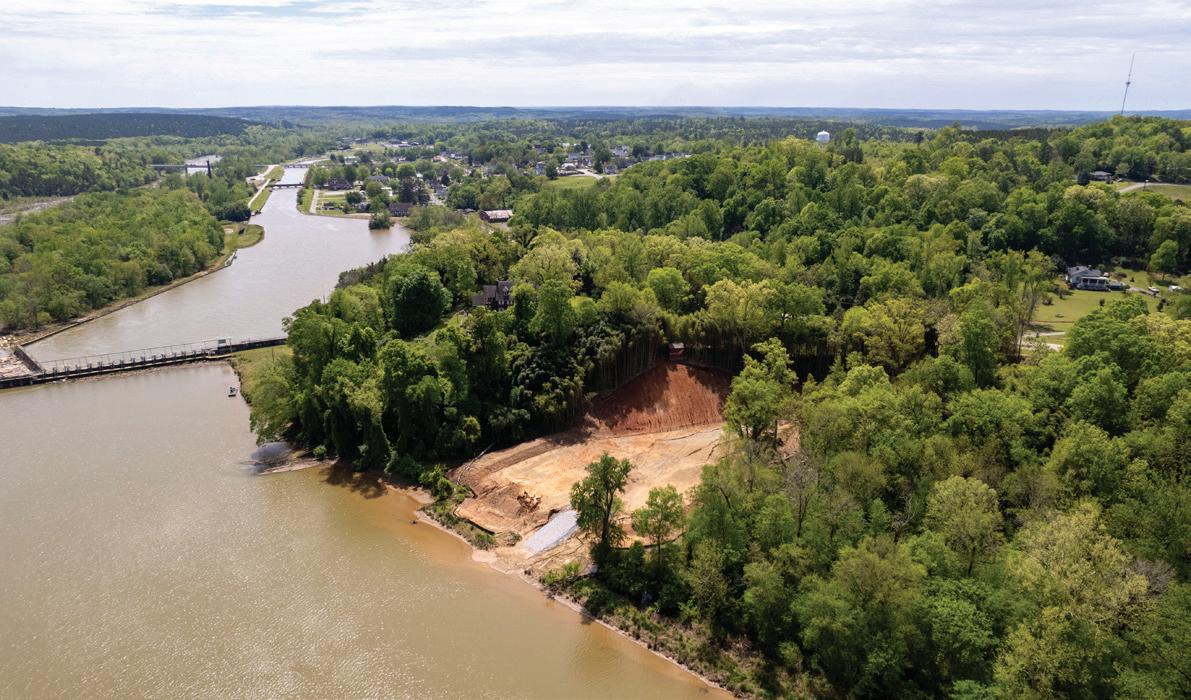
The Pacolet and Lawson's Creek Blueway has tremendous potential to provide regional collaboration and connectivity between the Towns of Lockhart and Pacolet. Currently the 30 miles of blueway between the two towns has only one developed access point. Additional public access points are recommended on both the Pacolet and the Broad River to help make paddle trips more manageable for blueway users.



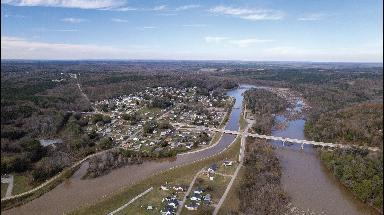


Lockhart and the surrounding area is home to an abundance of natural resources. The Town of Lockhart has outstanding potential to become the "base camp" for the region and to provide and improve access for both residents and visitors to these resources.
The natural resources located in the Lockhart area also offer tremendous opportunities for outdoor recreation and tourism-related capital infrastructure projects. Through sustainable planning and public resource management, these projects can become the foundation of an effective revitalization and economic development strategy.
The Sumter National ForestEnoree Ranger District includes approximately 170,000 acres in Union, Chester, Laurens, Newberry, and Fairfield Counties. The Enoree District was created by lands acquired by the federal government beginning in the 1930s. This district features picturesque scenery, rugged terrain, and vast streams. A number of Forest Service roads and trails provide access to a variety of outdoor recreation activities including fishing, hunting, hiking, camping, and boating. On the Broad River, just downstream from Lockhart, the Woods Ferry Recreation Area offers exceptional outdoor adventures.

Undoubtedly, Lockhart’s greatest natural asset is the Broad River. The main headwaters of the Broad are found in Western North Carolina along the slopes of the Blue Ridge Mountains. This majestic river and its important water resources meander for many miles through the upstate of South Carolina before reaching Lockhart. Here public boat access along the PacoletLawson Blueway provides convenient access for paddlers and anglers.

Lockhart’s rich history includes a strong Native American heritage, early exploration by European settlers, and accounts of the American Revolution. The past is honored, and culture is showcased at area historical sites and public spaces throughout the Olde English District, a district encompassing Lockhart, which was established by the South Carolina Department of Tourism in recognition of the region's unique culture.
Colloquially known by locals as the "Big House," the Fant Mansion is a singular local example of outstanding residential architecture. This privately owned 14-room mansion features characteristics of both the Tudor and Arts and Crafts styles. Built in 1925, this privately owned property is eligible for listing in the National Register of Historic Places due to its age and architectural significance.
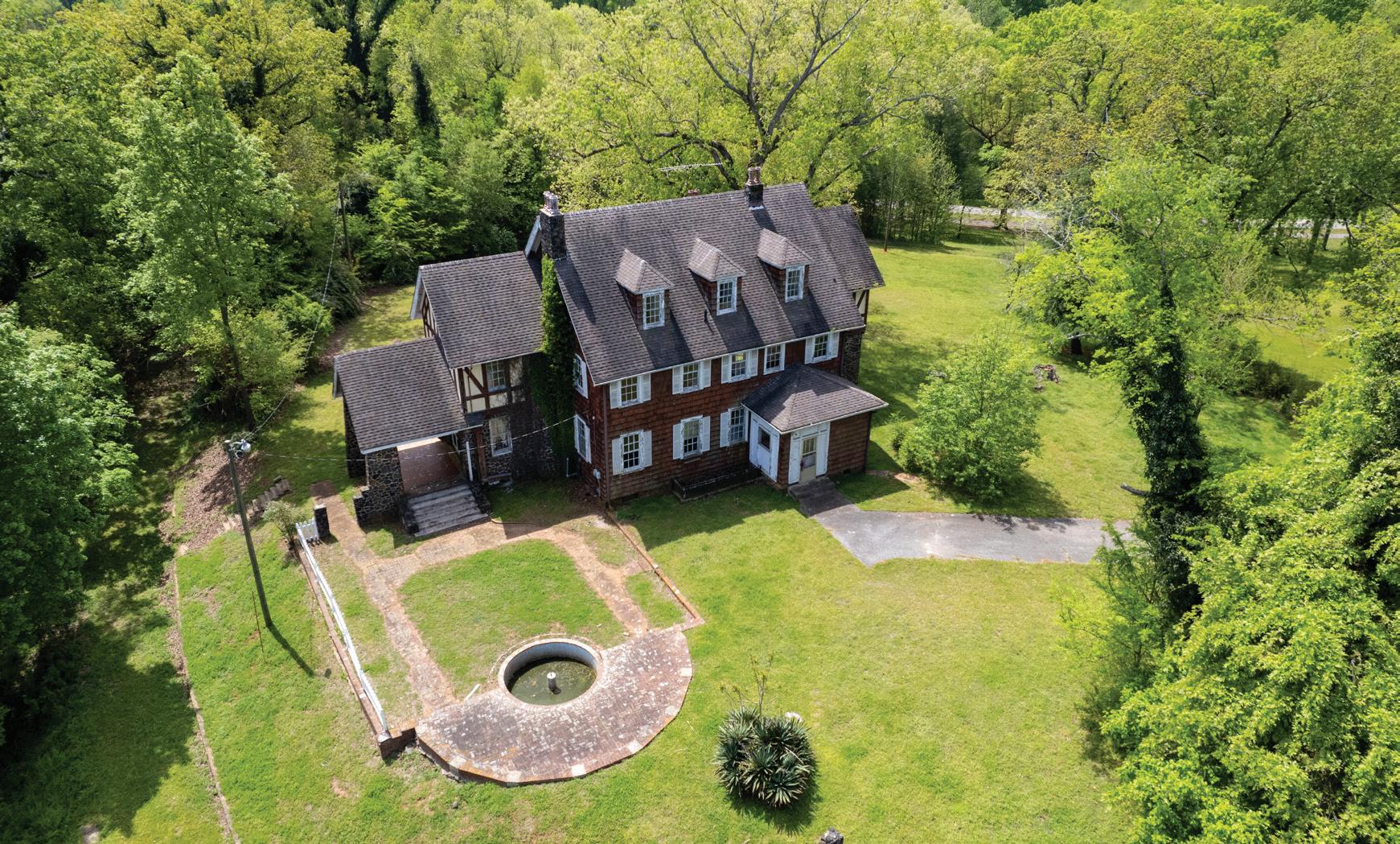

This chapter discusses tools used for public engagement and the key stakeholders and organizations involved in the planning process. Engagement activities were designed to obtain ideas from the community regarding outdoor recreation, tourism, and future development priorities. The chapter culminates with key emerging themes that will guide plan recommendations.
The Lockhart Tomorrow plan was initiated and introduced to the public using diverse public involvement techniques. A project fact sheet about the Lockhart Tomorrow project was developed to inform community members and stakeholders. Talking points on the fact sheet included: 1) the Plan Vision; 2) a description of the Plan’s Purpose; 3) an outline of the Planning Process; and 4) a set of goals to achieve realization of the plan.

The Lockhart Tomorrow planning process was led by the Town of Lockhart and included many other stakeholder groups including industry, business, government, and quasi-governmental agencies. The consultant team conducted interviews, focus group meetings, and walking tours with stakeholder groups identified at the kick-off meeting and established a coalition of community and local government leaders from across the region for the purpose of developing a cooperative vision. The consultant team also sought input from community members on initial recommendations. Key implications and takeaways from these meetings are incorporated into plan recommendations.
Appalachian Regional Commission
South Carolina Department of Commerce
Catawba Regional Council of Governments
Union County
Town of Lockhart
Residents
Property owners
Lockhart Power
Union County Development Board
Chamber of Commerce
Union Water and Sewer
Union County Schools
Union County Sheriff’s Department
Union County Community Development
Union County Tourism Commission
Union County Arts Council
Town of Pacolet
Kathy Jo Lancaster .................................. Union County Community Development and Special Projects
Curtiss Hunter Union County Tourism Commission
Dolton Williams ................................................................................. Union County Development Board
Sam Baines ........................................................................................................... Freewill Baptist Church
Danny Bright .......................................................................................................... Union County Council
Richard Lewis Methodist Church
Drew Rogers ............................................................................................................... First Baptist Church
Wes Foster ............................................................................................... Union County Sheriff’s Deputy
Shane Mitchell ......................................................................................... Union County Sheriff’s Deputy
Jeff Ashe Local Realtor
Patrick Kay ....................................................................................................Town Administrator, Pacolet
Community members participated in a public meeting with a drop-in format to review proposed site plans, provide feedback, and help prioritize recommendations.
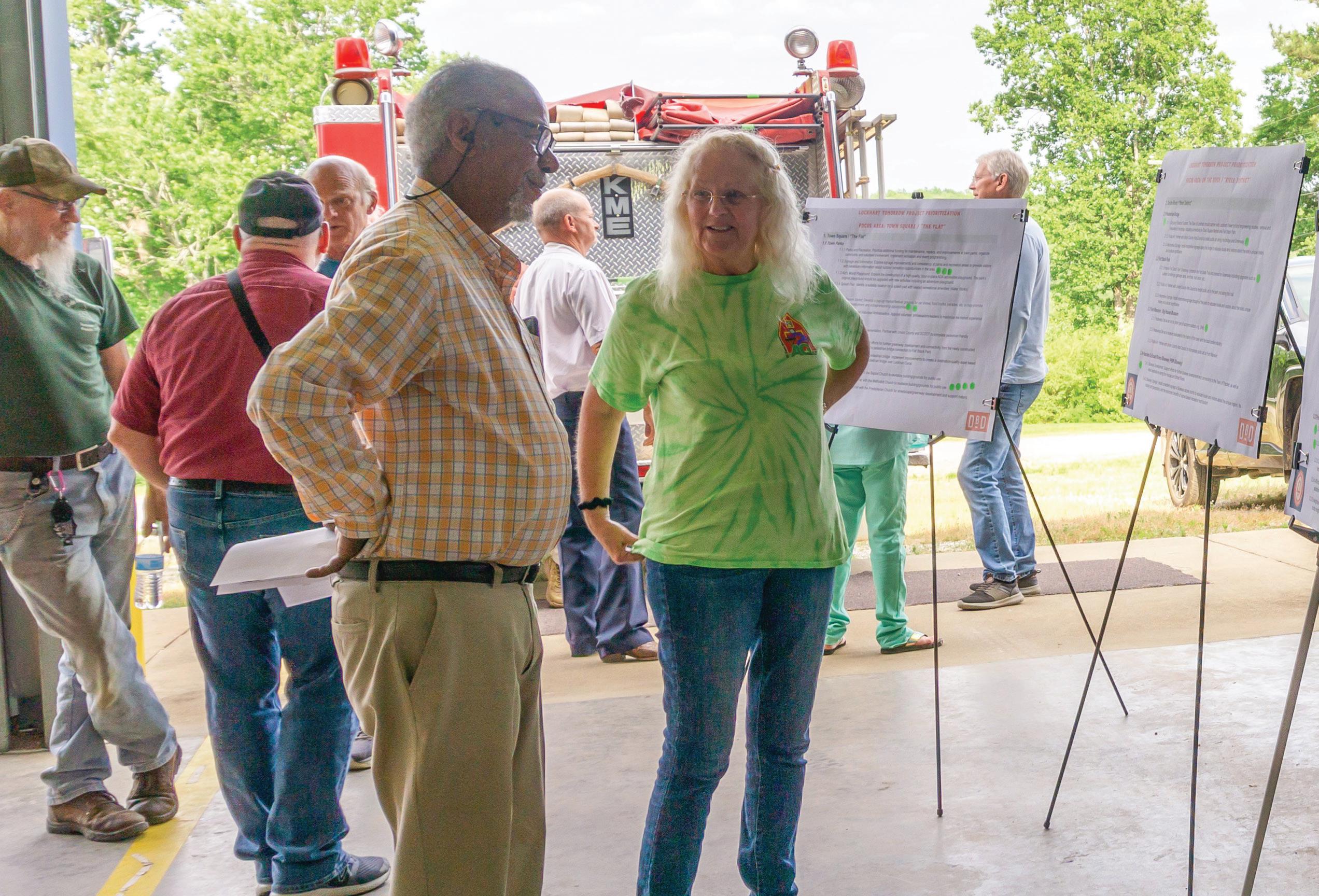
Stakeholder meetings were conducted throughout the planning process to set goals, gather input, and propose recommendations for the future of the Town of Lockhart.

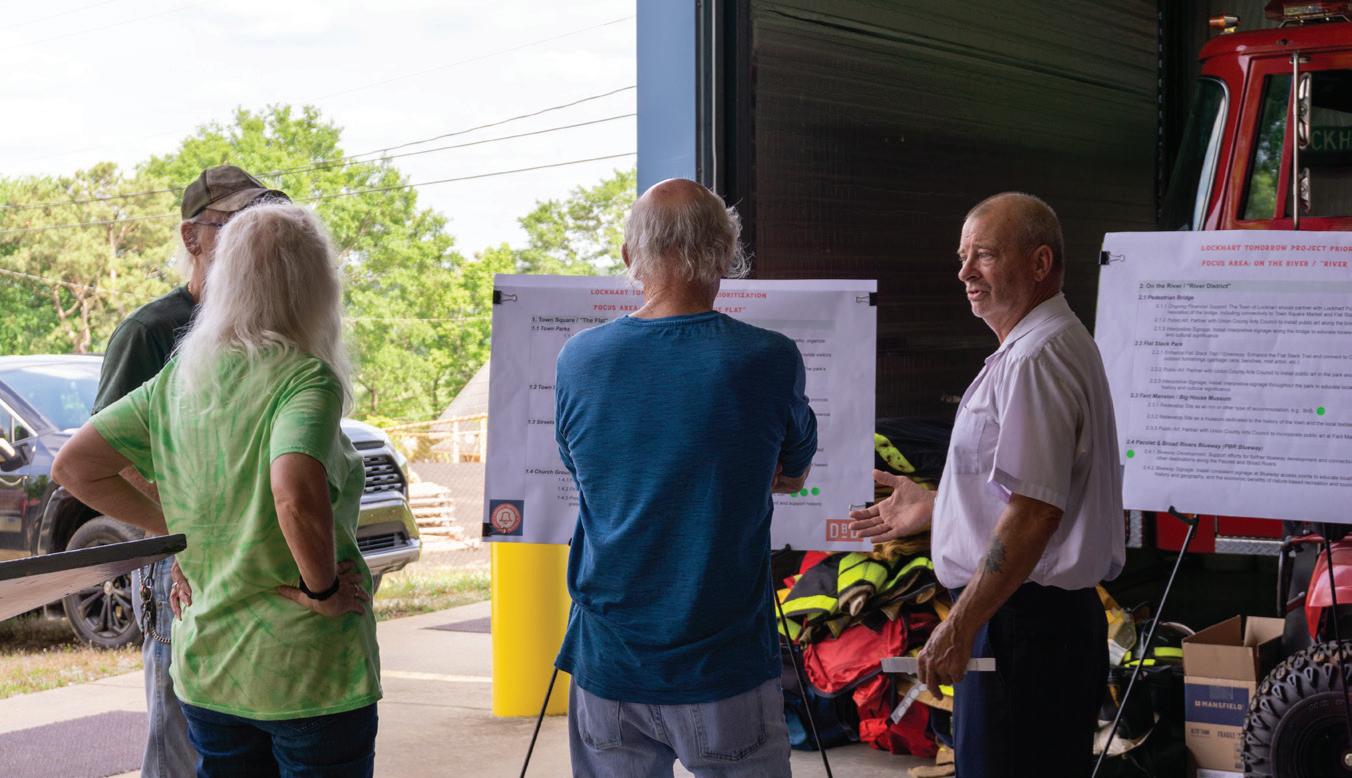


The Emerging Themes provide the framework and rationale for the recommendations made in Chapter 4. These themes will help guide local leaders and decision-makers over the next several years as the Town of Lockhart implements the vision cast by the Lockhart Tomorrow Plan.
The Town must steward their limited dollars effectively and make strategic investments focused on the connections between tourism, outdoor recreation, natural resources, heritage, and local culture to enhance quality of life and spur economic growth.
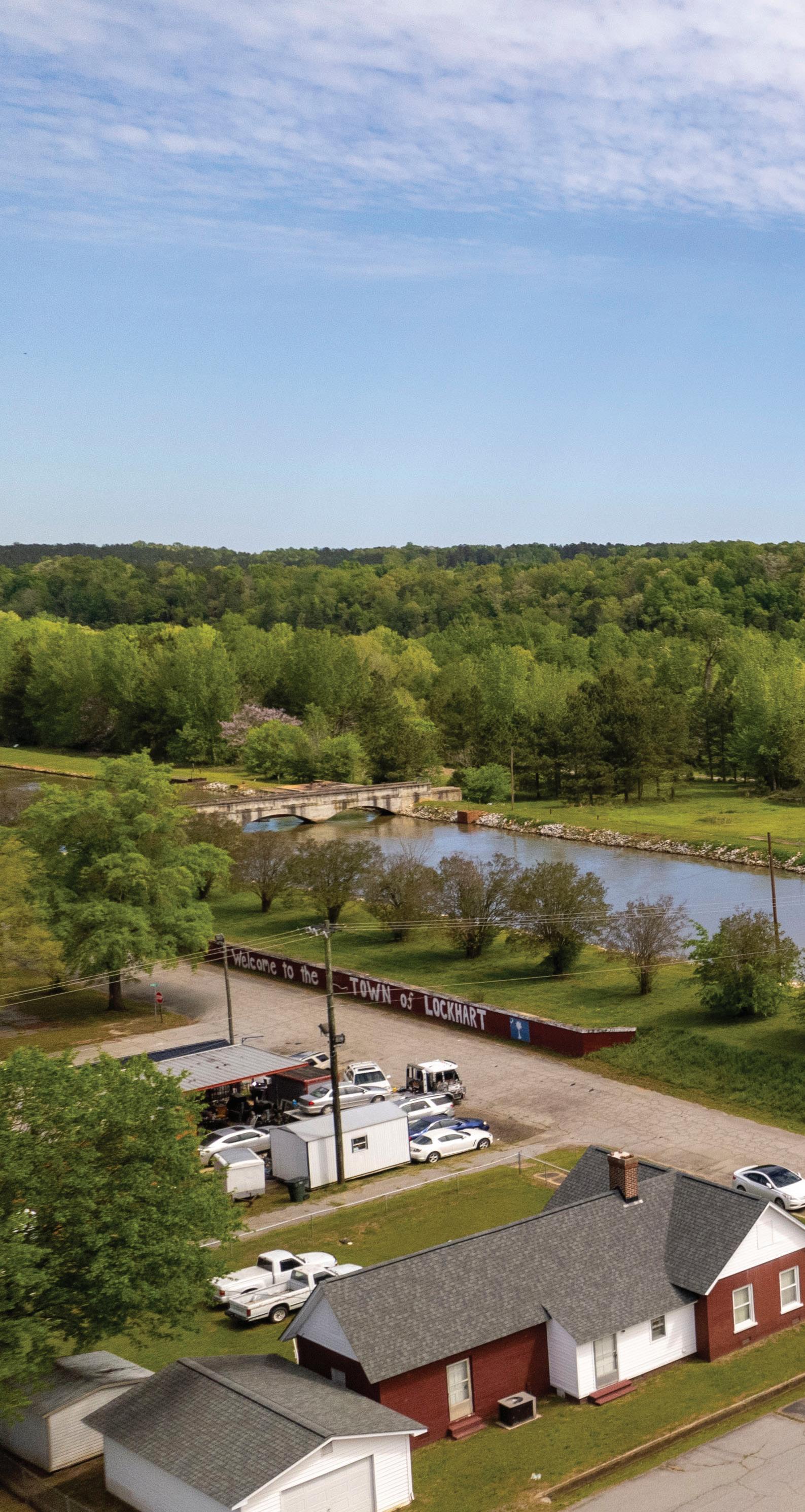
Install quality infrastructure that is both functional and aesthetically pleasing. Incorporate public event space that provides connectivity with surrounding neighborhoods and recreational assets. Invest in outdoor recreation infrastructure that increases public access to the region’s abundant natural resources and provides additional opportunities for passive and active recreation, improves the quality of life for residents, and attracts visitors.
Increase public awareness for opportunities within the Town of Lockhart, to visit and experience culturally significant and historic sites, outdoor recreation assets, and extensive natural resources.
Conserve and sustain natural resources, rural landscapes, and water quality through well-conceived trail corridors, public river accesses, and conservation lands.
Establish and maintain partnerships between federal, state and local government agencies; business, industry, and nonprofit organizations; and community groups and neighborhoods to help plan, implement, and manage projects and policy recommendations.
Promote place-making and the development of a variety of public projects that will enhance the community and stimulate growth. Include healthy and active living opportunities, gathering and event spaces, and additional green space featuring public parks and trails.

This chapter serves as the heart of the Lockhart Tomorrow Community Development Plan and is organized according to three (3) primary Focus Areas.
4.1 Focus Areas 1. Town Square 2. On the River 3. Village GridThe Lockhart Tomorrow Plan includes three distinct focus areas and their corresponding project areas.
1) Town Square / “The Flat”
1.1 Town Parks
1.2 Town Square
1.3 Streetscapes

2) On the River / “River District”

2.1 Pedestrian Bridge
2.2 Flat Stack Park
2.3 Fant Mansion / Big House Museum
2.4 Pacolet & Broad Rivers Blueway (PBR Blueway)

3) Village Grid / “Hill District”



3.1 Town-owned Properties
3.2 Lockhart Power / Pacolet Milliken Properties
3.3 Private / Rental Properties



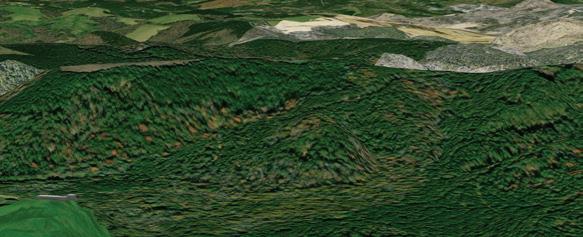


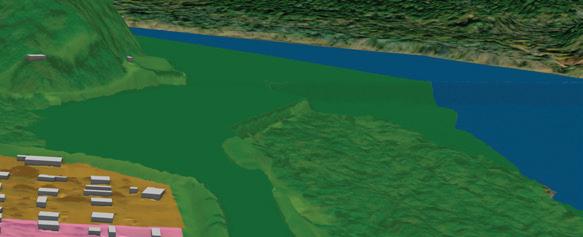




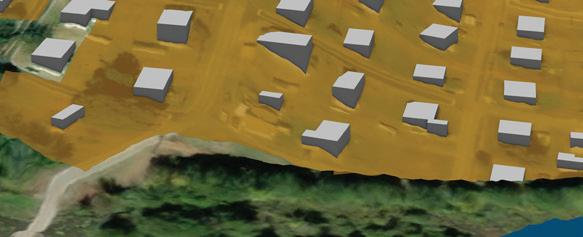





1.1.1 Parks and Recreation. Prioritize additional funding for maintenance, repairs, and improvements at town parks; organize community and volunteer involvement; implement recreation and event programming.
1.1.2 Signage and Information. Explore signage improvements and consistency at parks and recreation areas to provide visitors with necessary information about outdoor recreation opportunities in the area.
1.1.3 Kid's World Playground. Explore the construction of a highquality, pour-in-place ADA accessible playground. The park’s original playground should be upgraded with new activities including an adventure playground.
1.2.1 Town Square Market. Develop a pop-up market/festival grounds for car shows, food trucks, parades, etc. to help promote economic development and entrepreneurship opportunities.
1.2.2 Town Square Market Volunteer Ambassadors. Appoint volunteer ambassadors/leaders to maximize the market experience for visitors.
1.3.1 Canal Road Streetscape Implementation. Partner with Union County and SCDOT to complete pedestrian friendly streetscape along Canal Road.
1.3.2 Greenway Development. Support efforts for further greenway development and connectivity from the newly constructed Broad River Access at Fant Mansion to the pedestrian bridge connection at Flat Stack Park.
1.3.3 Greenway Node/Trailhead at new pedestrian bridge. Implement improvements to create a destination-quality outdoor recreation asset based on the planned relocation of the pedestrian bridge over Lockhart Canal.



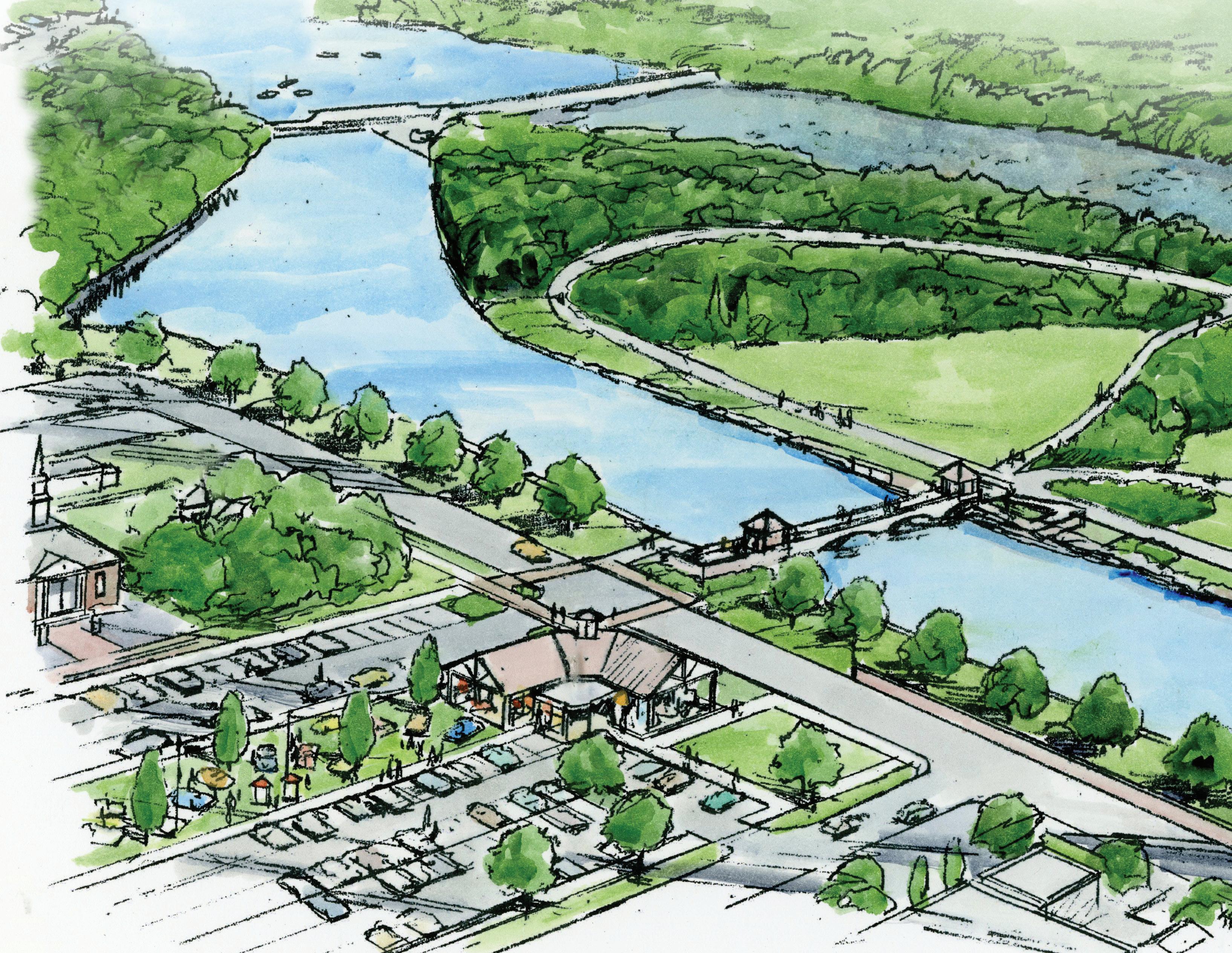
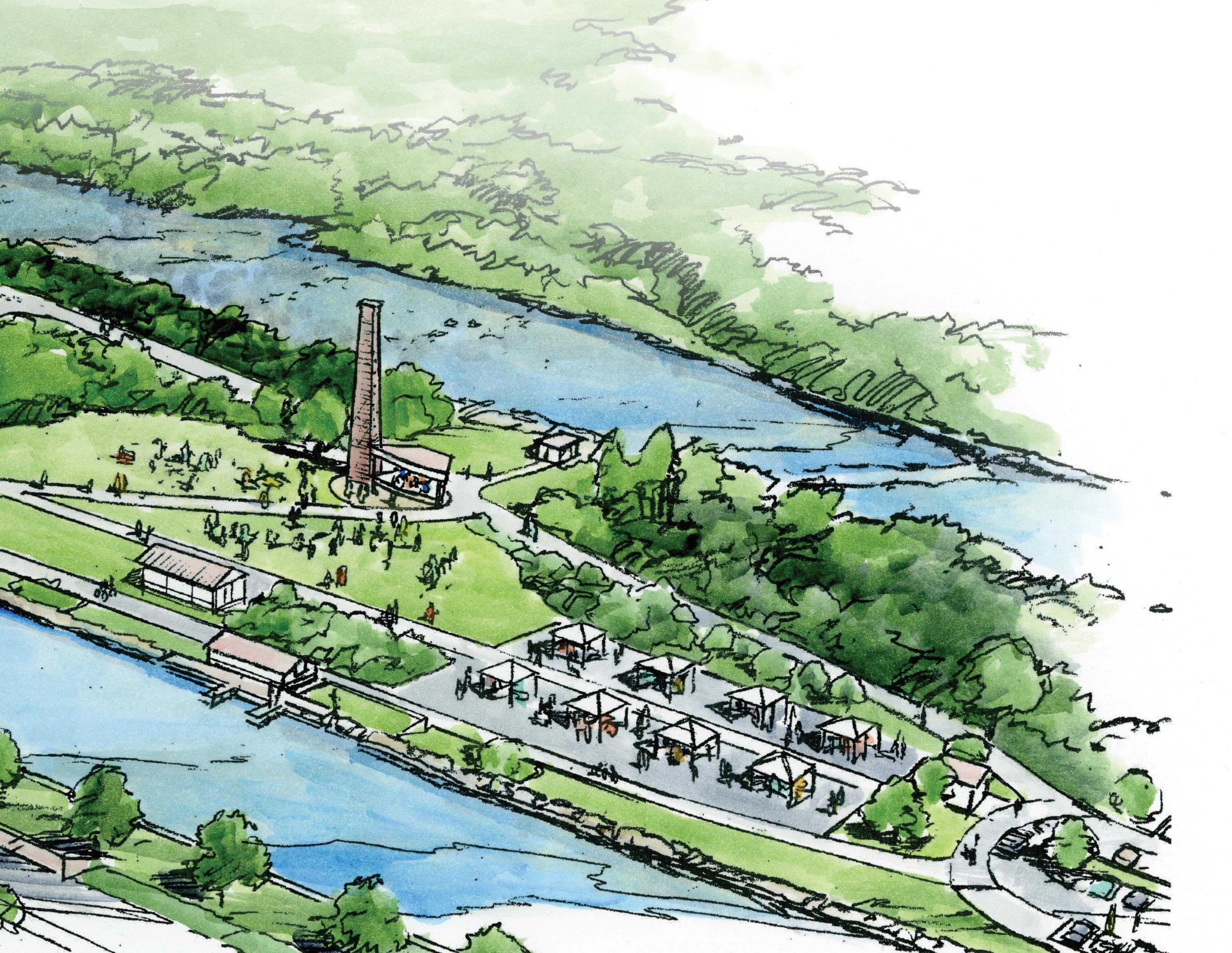
• Farmers Market
• Pavilion
• Open Green
• Commercial (future development)
• Resurfaced parking areas
• Public Art
• Streetscape/Greenway Development
• Relocate and Rebuild Pedestrian Bridge

• Enhanced Flat Stack Park
• Open Green
• Amphitheater and Event Stage
• Flexible Use Area on Mill Foundation
• Reconfigured Parking
Existing Flat Stack Trail On-Street Parking (34 Typical, 17 Parallel)

2.1.1 Ongoing Financial Support. The Town of Lockhart should partner with Lockhart Power to fund engineering studies, and removal and relocation of the bridge, including connectivity to Town Square Market and Flat Stack Park.
2.1.2 Public Art. Partner with Union County Arts Council to install public art along the bridge and Greenway.
2.1.3 Interpretive Signage. Install interpretive signage along the bridge to educate locals and visitors about the site's unique history and cultural significance.
2.2.1 Enhance Flat Stack Trail / Greenway. Enhance the Flat Stack Trail and connect to Greenway including upgrades such as outdoor furnishings (garbage cans, benches, mist arbor, etc.).
2.2.2 Public Art. Partner with Union County Arts Council to install public art in the park and along the trail.
2.2.3 Interpretive Signage. Install interpretive signage throughout the park to educate locals and visitors about the site's unique history and cultural significance.
2.3.1 Redevelopment Opportunity 1. Repurpose house as an Inn or other type of accommodation, such as a short-term vacation rental.
2.3.2 Redevelopment Opportunity 2. Redevelop site and grounds as a cultural museum dedicated to the history of the Town and the local textile industry.
2.3.3 Public Art. Partner with Union County Arts Council to incorporate public art at Fant Mansion.
2.4.1 Blueway Development. Support efforts for further blueway development and connectivity to the Town of Pacolet as well as other destinations along the Pacolet and Broad Rivers.
2.4.2 Blueway Signage. Install consistent signage at Blueway access points to educate locals and visitors about the unique region, its history and geography, and the economic benefits of naturebased tourism and outdoor recreation.



3.1.1 Hope Hospital. Convert to public space or repurposed medical facilities.
3.1.2 Old Lockhart School. Partner with Union County Schools to repurpose the facility for public use.
3.1.3 Armory. Repurpose for public use, possibly an athletic arena.
3.1.4 Water Works. Repurpose as an event venue, museum, or recreational facility.
3.2.1 On-going Community Engagement and Support (Organizational and Financial). Provide capacity building and funding to implement Lockhart Tomorrow recommendations.
3.2.2. Flat Stack Park. Implement park master plan to include event stage, ball courts, playground, restrooms, fencing / pavement updates, signage and art installation.
3.2.3 Flat Stack Greenway. Conduct feasibility analysis for the upgrade and extension of greenway from Fant Mansion/River Access, through Flat Stack Park, and ultimately to the Power Station.
3.2.4 Event Programming: Explore potential for hosting public gatherings and festivals, e.g. Music on the Broad during weekend evenings.
3.2.5 Boy Scout Hut / ADA Fishing platform. Support efforts to upgrade existing facilities.
3.3.1 On-going Community Engagement and Public Awareness Initiative. Reach out to property owners for participation/cooperation.
3.3.2 On-going Community Improvement. Re-establish the Beautification Committee and organize a local affiliate to participate in Palmetto Pride’s Keep SC Beautiful and Grab A Bag clean-up campaigns.
3.3.3 Code enforcement. Adopt reasonable standards and enforce ordinances/codes (e.g. Minimum Housing, Nuisance, Junk Vehicles, etc.) to help remedy existing conditions on blighted properties.
3.3.4 Affordable Housing Finance & Construction. Partner with affordable housing agencies and similar organizations to provide additional housing opportunities in specific areas available for infill/ redevelopment.
3.3.5 Neighborhood Association / Community Watch / Public Safety. Organize a neighborhood association to provide ”grass-roots” citizen support of local law enforcement officers and to help improve the quality of life and public safety.

This chapter provides a listing of general plan recommendations, a comprehensive implementation and prioritization matrix for specific recommendations, and an estimate of individual project costs. Potential funding sources and key grant-making agencies are described here.
The Lockhart Tomorrow Action Plan is the product of months of planning and numerous meetings with stakeholders and community members. The planning process identified areas that are well-suited and poised for capital investment and future development. The areas identified include those which emphasize important connections between communities and tourism development in the region. Within the Focus Areas 10 unique “Projects” have been identified, along with 33 “Recommendations” essential for the successful implementation of each project.
Each project identified in Lockhart Tomorrow is intended to promote economic growth and community development, whether this includes actual physical construction and the development of capital infrastructure projects, or lesstangible ideas, such as building new partnerships and public awareness. Redevelopment of key infill properties for downtown revitalization and tourism purposes is an integral part of the plan, as is the enhancement and expansion of existing outdoor recreation opportunities. Implementation of these projects will require the structured coordination and collaboration of many stakeholders and investors.
"Plan your work..., then work your plan.”
-Norman Vincent Peale
1. Wayfinding Signage. Develop a Wayfinding Plan and install well-designed signage at appropriate locations throughout town.
6. Campground/RV Park. Identify a location for a Campground/RV Park and support development of necessary infrastructure.
2. Public Art Master Plan. Develop a Public Art Master Plan and partner with local artists for style, inspiration/mood, and installation sites.
7. Alternative Transportation. Prepare and adopt a multi-modal bicycle and pedestrian plan and adopt a slow-speed vehicle ordinance for golf carts/UTV usage on public streets. Install EV charging stations.
3. Downtown Development. Initiate the National Main Street Four Point Approach to development based on: Economic Vitality, Design, Promotion, and Organization.
8. Organizational Capacity. Establish a Lockhart Tomorrow Implementation Committee that meets regularly and hire additional staff to assist with implementation of plan initiatives.
4. Land Use. Adopt interlocal agreement with Union County for the enforcement of county ordinances and with the support of Catawba Regional COG, enact sensible land use regulations.
9. Promotion and Marketing. Adopt a Town of Lockhart Place Brand and establish an internet presence that includes a new website featuring a Lockhart Tomorrow look and feel.
5. Cultural and Environmental Education: Explore partnerships with outside agencies to offer information related to Historic Preservation and Nature Based Tourism (USFS, NPS, SCDNR, USFWS, Upstate Forever).
10. Operation and Maintenance. Adopt an Operation and Maintenance/Management Plan for amenities and infrastructure developed as part of Lockhart Tomorrow.
The Appalachian Regional Commission (ARC) is a federal economic development agency focusing on the Appalachian region that partners with states and local communities to make grants supporting a broad range of economic development categories. Investment priorities include projects related to community infrastructure, regional culture and tourism, and building businesses and workforce ecosystems.
The Lowe’s Hometown Grants Program supports community projects that involve making physical improvements or enhancements. Projects must be sponsored by a nonprofit or government entity and must fall into at least one of the following categories: community resources/space; safe affordable housing; cultural preservation; area revitalization; and/or skilled trades education initiatives.
The Rural Development program offers grants and loans to help develop or improve essential public services and facilities in rural communities. Funds may be used to construct, expand, or develop community-based initiatives that improve the quality of life and assist in the economic development and sustainability of rural areas.
The Transportation Alternatives Program is funded through the Federal Highway Administration (FHWA). This program allows local governments in South Carolina to apply for grants for a variety of nonmotorized transportation projects.
The South Carolina Community Development Block Grant (CDBG) Program provides funding to local governments for projects that help meet their community revitalization needs. CDBG projects must benefit low or moderate-income neighborhoods, eliminate blight, or address other urgent community needs.
This grant program supports economic development projects that have measurable results and improve a municipality's quality of life. The program promotes and recognizes innovation in economic development practices that can be maintained over time and replicated in other cities.
The People For Bikes Community Grant Program provides funding for projects that support bicycling in the United States. People For Bikes' mission is to "Make biking better for everyone and get more people on bikes, more often."
The Recreational Trails Program is a federal grant program designed to help states develop recreational trails. The South Carolina Department of Parks, Recreation and Tourism administers the program and provides funds to support trail-related projects in local communities including land acquisition, trail construction, trail maintenance, and safety and education programs.
T-Mobile has partnered with Smart Growth America and Main Street America, to help build stronger and more prosperous small towns and rural communities. With the Hometown Grant program, the company is investing in communities by awarding grants of up to $50,000 for qualifying projects. The T-Mobile Hometown Grants program will help fund projects that build or renovate public spaces.
The Timken Fund is an independent , philanthropic foundation that awards grants to strengthen the communities where they operate. The Timken Foundation supports local communities in the areas of basic needs, education, and community development.
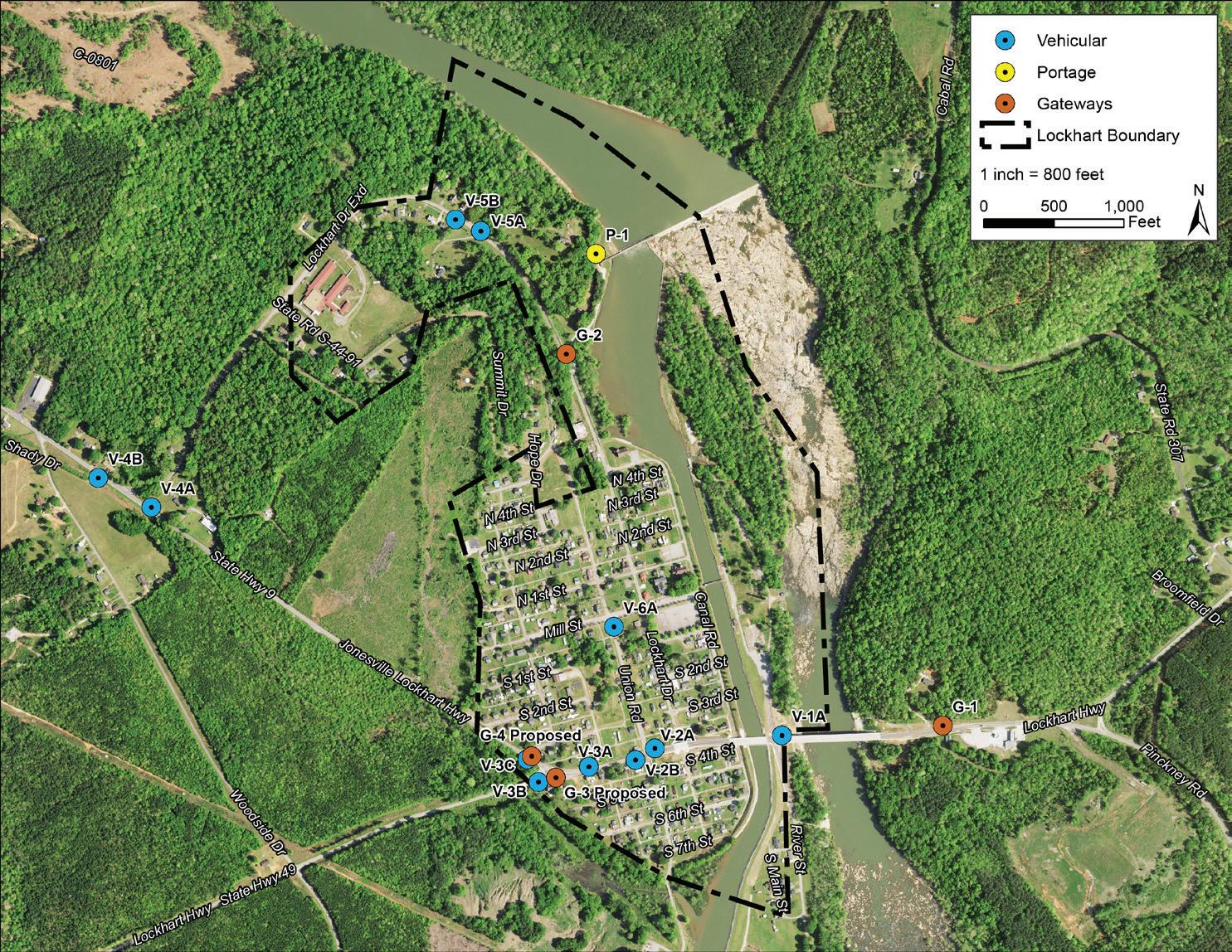




PUBLIC FORUM SIGN IN SHEETS

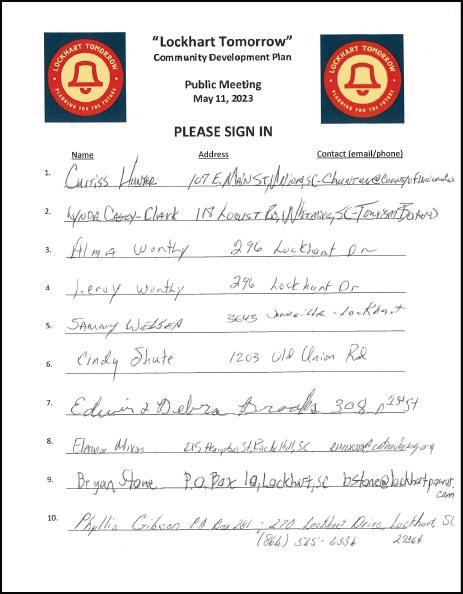
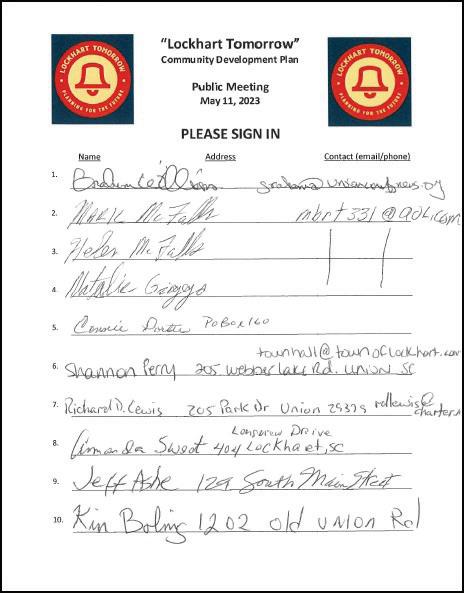

PROJECT PRIORITIZATION EXERCISE #1

PROJECT PRIORITIZATION EXERCISE #2

PROJECT PRIORITIZATION EXERCISE #3


© Destination by Design 2023